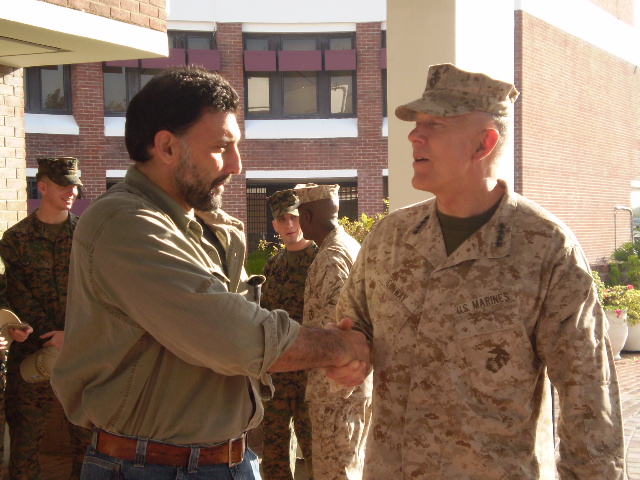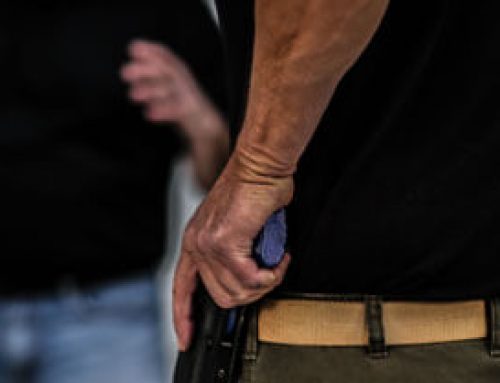One of the most important considerations in preparing for personal combat is resiliency. Pioneered by United States Special Operations Command (USSOCOM), combat resiliency training is officially known as Preservation of the Force and Family (POTFF). The POTFF mission is to optimize operations, mission readiness, longevity and performance through integrated and holistic human performance programs designed to strengthen the force and the family.
Combat resiliency is best described by a quote from USSOCOM Commander General Richard Clarke, “Humans are more important than hardware. By investing in our people, ensuring a trusted, capable, diverse and committed force that is ready to meet any challenge.”
What mission essential core concept can be gleaned from USSOCOM POTFF and apply to your life that can further develop combat resilience? Taking a proactive and holistic approach to operational readiness via physical training, psychological perspective and contingency planning.
Physical Training
The military is world renown for setting the standard for physical prowess. Going as far back as the ancient Spartans and the Roman legions all the way up to and including todays Special Forces operators are recognized for their superior discipline, and commitment to combative competency.
What’s the one thing that separates the military and law enforcement from the average non-sworn civilian? Training. What’s the differentiator between regular defense department and specialized units? Training. What separates the best defensive or competitive shooters, NASCAR drivers and fighter pilots from their lesser-skilled counterparts? Training.
If you want to be proficient at any physical skill, training is an absolute necessity. It is the differentiator and is what separates you from everyone else in line at the grocery store.Whatever your chosen skillset, if you want to further develop your combat resilience, you cannot forgo training. All physical skills are perishable and like speaking a second language or playing a musical instrument it takes a long time to develop and a short time to attenuate. If you don’t use it you lose it. Once you’ve gained that specific physical skill, the onus is on you for sustainment.
Psychological Perspective
We as humans share common worries in life where such anxiety and stressors that can and do attenuate combat resilience. Such worries can include financial or job security, relationships, and health to list a few of the most common.
Job security worries can develop because of internal pressures such as difficulties with upper management, or performance issues and the like, as well as external pressures such as the economy or the resurgence of an economically debilitating pandemic. Addressing these issues one at a time and to the best of your abilities – even if it’s just discussing them with family and friends can alleviate some of that anxiety.
Strained relationships can also throw a monkey wrench into your combat resiliency as family places a critical role in support and survival infrastructure. Identifying and alleviating those issues that place strain on a relationship are what allow you to place those otherwise-occupied units of attention toward operational readiness.
Health can cause a significant amount of psychological turmoil and must be set forth as a priority. In terms of surviving a violent physical altercation it is the highest priority. We’ve all heard the phrase “When you have your health you have everything.” Nothing rings truer as we grow longer in the tooth.
One of the most sobering quotes on the importance of prioritizing health is passed on to us by none other than His Holiness the Dali Lama “Man sacrifices his health to make money. Then he sacrifices his money to recuperate his health. And then he is so anxious about the future that he does not enjoy the present; the result being that he does not live in the present or the future; he lives as if he is never going to die, and then dies having never really lived.”
Contingency Planning
As failure is not an option, we all want to plan for success, but even the highest trained warriors understand the importance of contingency planning.
A contingency plan is a backup plan to your primary plan. Otherwise known as “Plan B” a contingency plan is designed specifically for future unforeseen and undesirable events. It is a proactive measure to ensure things transition as wrinkle-free as possible. In the event of a real-world threat, a contingency plan can be utilized as an additional means to apply control to a unpredictable conditions.
Contingency planning is essential to resilience as it help you to prepare for unforeseen situations. The strategic advantage of having a contingency plan is that when “Plan A” begins to unravel you’re not wasting valuable time trying to create an alternative gameplan from scratch when your backup plan is already made and can be immediately deployed.
Your contingency plan significantly increase adaptability, affords additional opportunity and provides a previously determined means of risk mitigation, all of which significantly contribute to your combat resiliency. Creating a contingency plan is not any more difficult than crafting your “Plan A.” You need to be prepared for a wide range of possible scenarios playing out and be ready to circumnavigate the proverbial hurdles that may be placed in your path.
Recommended practices to help you with your contingency planning include a thorough situational assessment. Relevant and accurate information allow you to make educated decisions. Set achievable objectives and then list the steps to reach those objectives. Ask the opinion of others with similar or even greater experience and background. Educate everyone in your group such as family, friends and even neighbors if they may be involved in your planning. Review the details with all involved, specifically those designated roles and responsibilities and ask them to repeat it back to you in their own words so that you know there is a clear understanding.
General Clarke’s quote is an accurate assessment – humans are more important than hardware. Taking a proactive and holistic approach to operational readiness via physical training, psychological perspective and contingency planning further enhances your combat resilience and that of those nearest you whom you are committed to protect.






